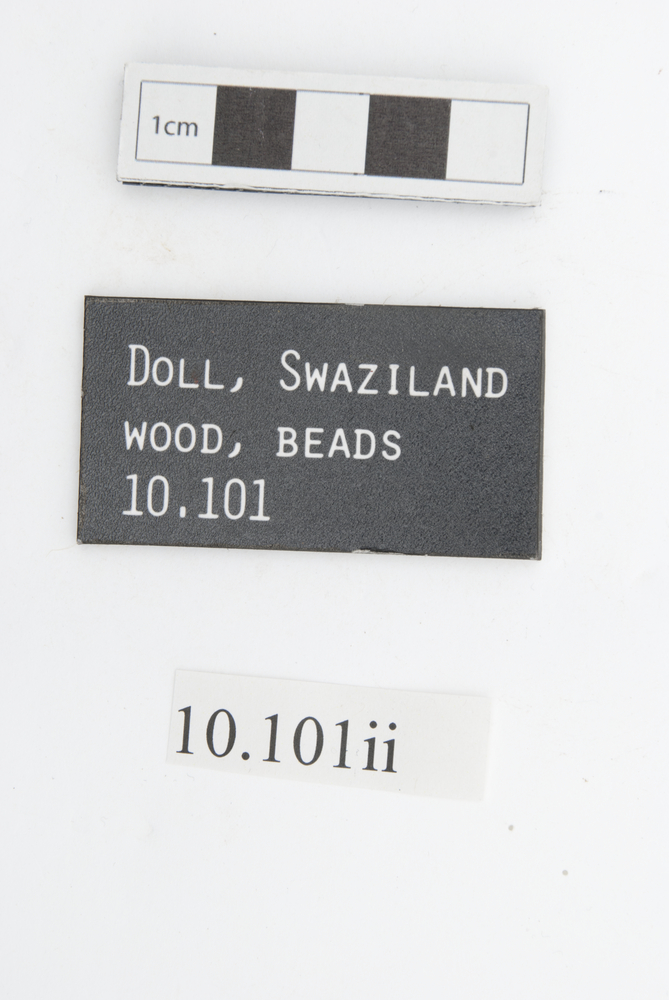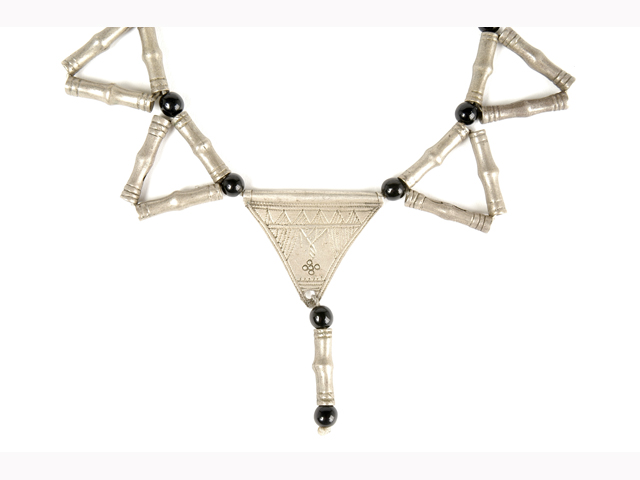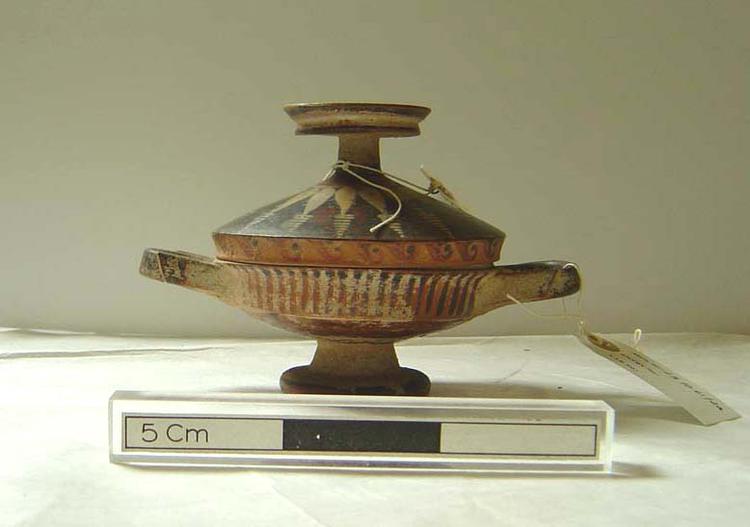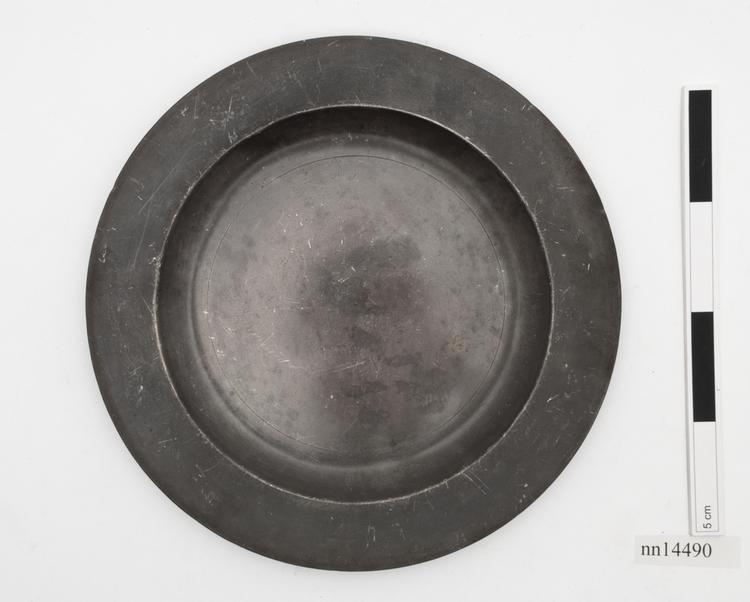
Composed of a near conical wooden core sheathed in beadwork, this object is not a doll in the conventional Western sense, but rather a woman’s fertility figure in the form of an adult female. Such figures, which incorporate talismanic material, were once used by the bride during marriage ceremonies to ensure fertility and were also employed by childless women to treat barrenness.
There are several types of South Sotho figures; the present piece is of the wood-core variety. This type of figure has been in use since at least the late nineteenth century. For a related example, see Christol, 1987, page 82.
The present object appears to be photographed in profile and may have a round, flat brass button for a face. The wood-core apex may be over-modeled with clay, forming the head. First hand inspection is required in order to confirm these findings.
The beadwork pattern and pink, green, black and white (with touches of red) colour combination is distinctively South Sotho. The wood-core would have been carved by a man and then ‘dressed’ by a woman/women.See Wood, 1998.
Composed of a near conical wooden core sheathed in beadwork, this object is not a doll in the conventional Western sense, but rather a woman’s fertility figure in the form of an adult female. Such figures, which incorporate talismanic material, were once used by the bride during marriage ceremonies to ensure fertility and were also employed by childless women to treat barrenness. There are several types of South Sotho figures; the present piece is of the wood-core variety. This type of figure has been in use since at least the late nineteenth century. For a related example, see Christol, 1987, page 82. The present object appears to be photographed in profile and may have a round, flat brass button for a face. The wood-core apex may be over-modeled with clay, forming the head. First hand inspection is required in order to confirm these findings. The beadwork pattern and pink, green, black and white (with touches of red) colour combination is distinctively South Sotho. The wood-core would have been carved by a man and then ‘dressed’ by a woman/women.See Wood, 1998. (I would be interested to know if there is any documentation relating to Zuiney, the vendor. Elliott, Catherine 2013-06-03)


































































































































































































































































































































































































































































































































